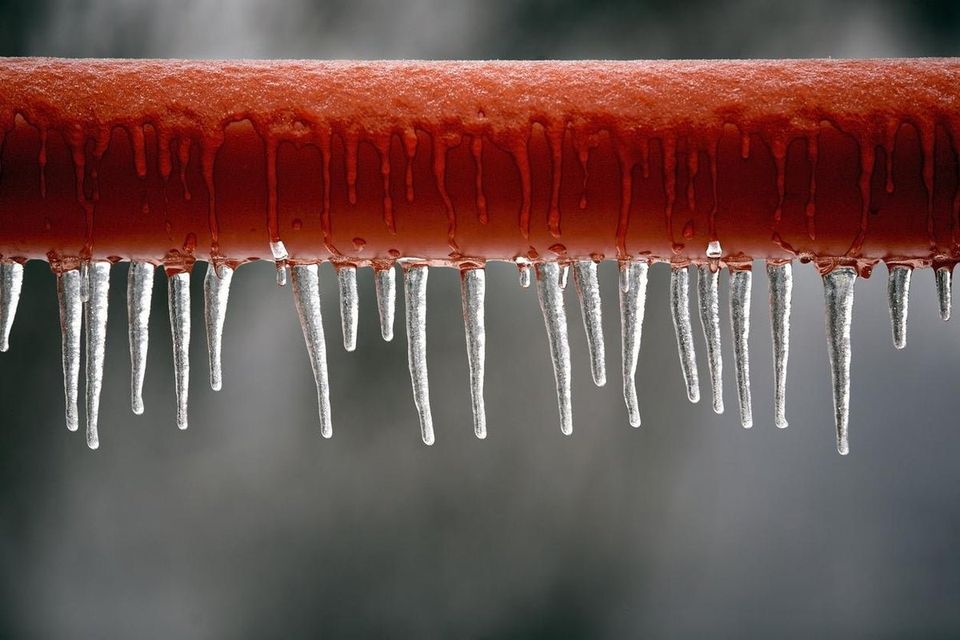Protecting Pipes from Freezing Issues: Critical Strategies
Protecting Pipes from Freezing Issues: Critical Strategies
Blog Article
This post directly below involving Preventing and dealing with frozen pipes is immensely engaging. Have a go and draw your own assumptions.
:strip_icc()/snow-outdoor-faucet-pipes-4af65d1e5e904fb1aa7bf74071fe5d89.jpg)
Cold weather can wreak havoc on your pipes, specifically by freezing pipes. Here's how to stop it from taking place and what to do if it does.
Introduction
As temperatures decrease, the threat of frozen pipelines increases, potentially bring about pricey repair services and water damage. Comprehending just how to prevent icy pipelines is vital for homeowners in chilly climates.
Recognizing Icy Pipes
What causes pipes to ice up?
Pipes freeze when revealed to temperature levels listed below 32 ° F (0 ° C) for prolonged durations. As water inside the pipes freezes, it expands, taxing the pipe walls and possibly causing them to rupture.
Dangers and damages
Icy pipes can result in water supply interruptions, residential or commercial property damage, and expensive repair work. Burst pipes can flooding homes and create considerable architectural damage.
Signs of Frozen Piping
Identifying icy pipes early can avoid them from bursting.
Exactly how to determine icy pipes
Search for lowered water circulation from faucets, unusual odors or sounds from pipelines, and visible frost on exposed pipelines.
Avoidance Tips
Shielding vulnerable pipes
Wrap pipes in insulation sleeves or utilize warm tape to secure them from freezing temperature levels. Focus on pipes in unheated or outside areas of the home.
Heating methods
Keep indoor rooms sufficiently heated, particularly locations with plumbing. Open closet doors to enable warm air to distribute around pipelines under sinks.
Protecting Outside Pipes
Garden tubes and outside taps
Detach and drain garden pipes before winter months. Install frost-proof spigots or cover outside taps with shielded caps.
What to Do If Your Pipes Freeze
Immediate activities to take
If you believe frozen pipelines, maintain faucets open up to ease stress as the ice melts. Make use of a hairdryer or towels taken in hot water to thaw pipelines gradually.
Long-Term Solutions
Architectural adjustments
Think about rerouting pipelines far from outside walls or unheated areas. Add additional insulation to attics, cellars, and crawl spaces.
Updating insulation
Buy high-quality insulation for pipelines, attic rooms, and wall surfaces. Appropriate insulation assists preserve regular temperature levels and lowers the threat of icy pipes.
Conclusion
Preventing icy pipelines requires proactive steps and quick feedbacks. By recognizing the causes, indications, and preventive measures, house owners can safeguard their plumbing throughout cold weather.
6 Proven Ways to Prevent Frozen Pipes and Protect Your Home
Disconnect and Drain Garden Hoses
Before winter arrives, start by disconnecting your garden hoses and draining any remaining water. Close the shut-off valves that supply outdoor hose bibs and leave the outdoor faucet open to allow any residual water to drain. For extra protection, consider using faucet covers throughout the colder months. It’s also important to drain water from any sprinkler supply lines following the manufacturer’s directions.
Insulate Exposed Pipes
Insulating your pipes is an effective way to prevent freezing. Pipe insulation is readily available at home improvement stores and is relatively inexpensive. Pay close attention to pipes in unheated areas such as the attic, basement, crawl spaces, or garage. Apply foam insulation generously to create a buffer against the cold. You can also wrap your pipes in heat tape or thermostat-controlled heat cables for added warmth.
Seal Air Leaks
Inspect your home for any cracks or openings that could let in cold air. Seal any holes around the piping in interior or exterior walls, as well as the sill plates where your home rests on its foundation. Additionally, make sure to keep your garage door closed unless you’re entering or exiting. Leaving it open creates a significant air leak that can lead to frozen pipes.
Allow Warm Air Circulation
During cold snaps, it’s essential to allow warm air to circulate evenly throughout your home. Leave interior doors ajar to promote better airflow. Open kitchen and bathroom cabinets to help distribute heat consistently around the rooms. If you have small children or pets, be sure to remove any household chemicals or potentially harmful cleaners from open cabinets for safety.
Let Faucets Drip
A small trickle of water can make a big difference in preventing ice formation inside your pipes. When temperatures drop significantly, start a drip of water from all faucets served by exposed pipes. This continuous flow helps prevent the water from freezing. Additionally, running a few faucets slightly can relieve pressure inside the pipes, reducing the chances of a rupture if the water inside does freeze.
https://choateshvac.com/6-proven-ways-to-prevent-frozen-pipes-and-protect-your-home/

Hopefully you enjoyed our piece about Preventing and dealing with frozen pipes. Thank you for finding the time to read our article post. Are you aware of another individual who is intrigued by the niche? Why not share it. I value your readership.
Schedule And Pricing Report this page